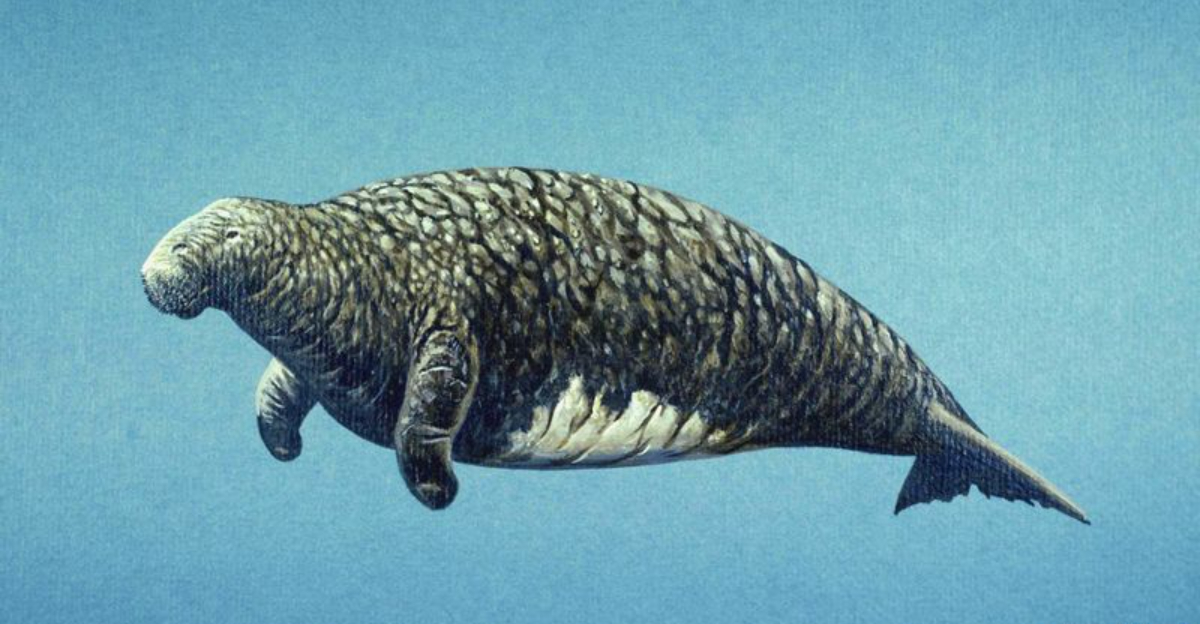The deep blue sea, with its vastness and mystery, has always been home to countless enigmatic creatures. Over time, however, human activities and natural changes have led to the extinction of some truly remarkable sea life.
Let’s talk about some incredible sea creatures that have vanished from our waters forever. With vivid descriptions and engaging narratives, let’s dive into the stories of these lost wonders.
8. Steller’s Sea Cow
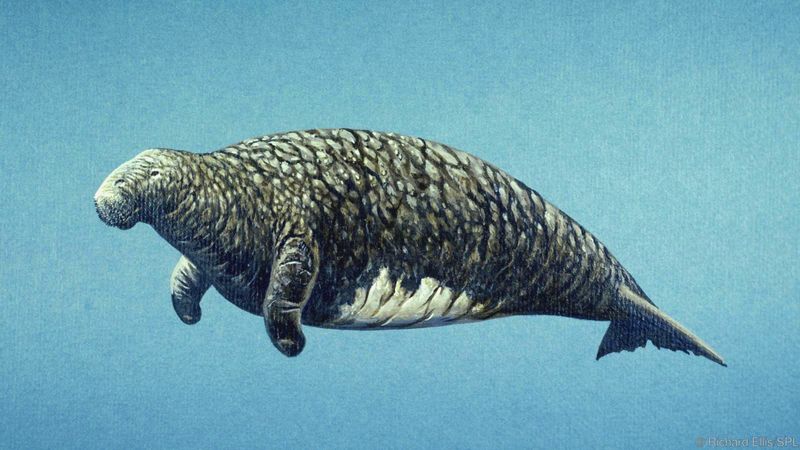
In the icy waters of the Bering Sea, there once drifted a gentle giant known as the Steller’s Sea Cow. This massive marine mammal, which could grow up to 30 feet in length, was a distant relative of the manatee.
Its distinct appearance included a thick hide, resembling bark, and no teeth, feeding solely on kelp. Sightings of these creatures were rare, occurring mostly in the 18th century.
Sadly, they met their demise only 27 years after being discovered by Europeans. The primary cause of their extinction was overhunting by humans. These peaceful giants were easy targets, as they moved slowly and lived near the surface.
Their extinction serves as a stark reminder of the impact humans can have on nature. Today, while we can no longer witness these creatures, their story urges us to protect the marine life that still thrives in our oceans.
7. Great Auk
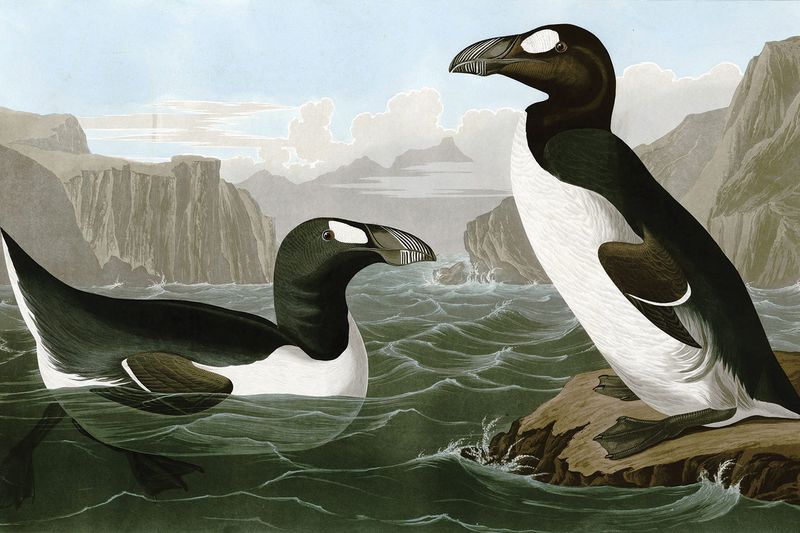
Once gracing the rocky shores of the North Atlantic, the Great Auk was a remarkable sea bird known for its striking appearance and unfortunate fate.
It resembled a penguin, with its black and white plumage, though it was not related. The Great Auk was a flightless bird, using its small wings to swim rather than fly.
They were social creatures, often found in large colonies on islands, where they nested and raised their chicks. However, their inability to fly made them vulnerable to human hunters. By the mid-19th century, these birds were hunted to extinction, prized for their feathers, meat, and eggs.
Preserved specimens and illustrations are all that remain of the Great Auk, as a haunting reminder of how human exploitation led to their rapid disappearance.
Their story highlights the importance of conservation efforts to prevent similar fates for other vulnerable species.
6. Megatooth Shark
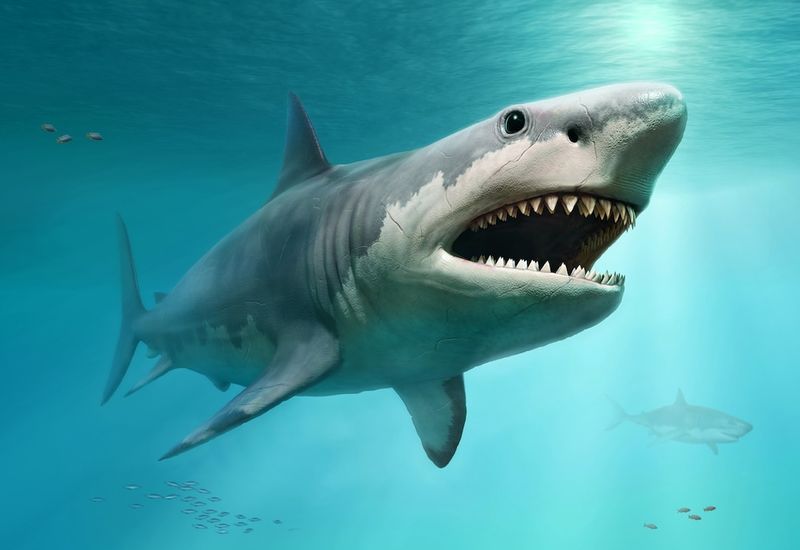
Millions of years ago, the oceans were ruled by a formidable predator known as the Megatooth Shark, or Megalodon. This gigantic fish, which could reach lengths of over 60 feet, was a master of the ancient seas.
Its massive jaws, lined with serrated teeth, were capable of crushing bones and even small whales. Fossil evidence suggests the Megalodon thrived during the Miocene and Pliocene epochs, dominating the aquatic food chain.
The extinction of this colossal predator is believed to have been triggered by climate changes and declining prey availability. Without the Megalodon, the marine ecosystem underwent significant shifts, allowing other species to flourish.
Today, this legendary shark remains a subject of fascination, often depicted in popular culture. Its incredible size and power continue to capture the imagination, serving as a reminder of the ocean’s once terrifying giants.
5. Moa-nalo Duck
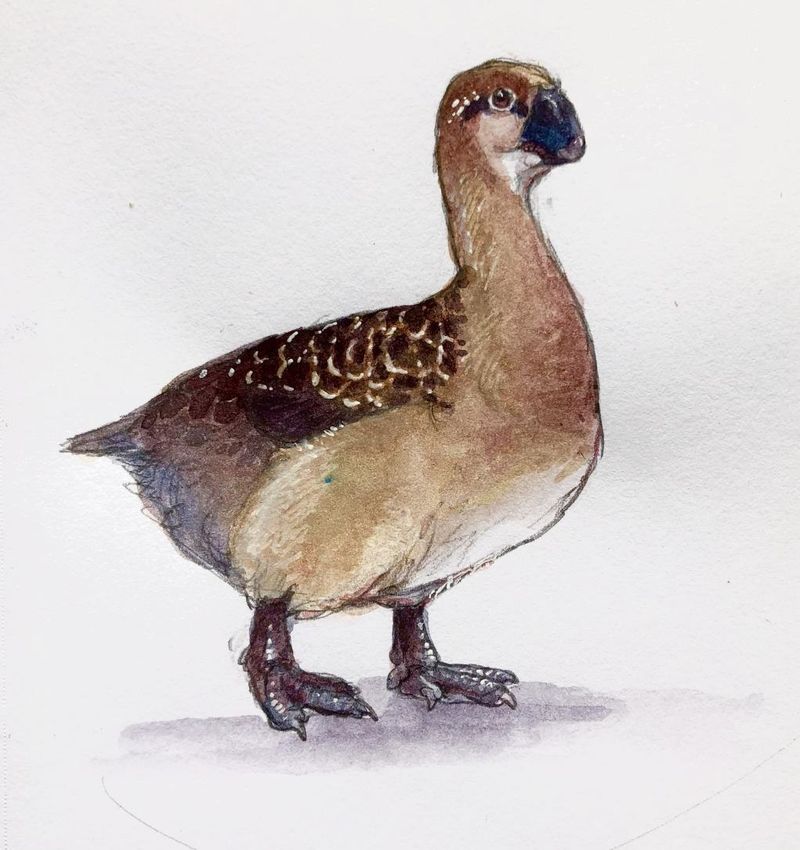
The lush islands of Hawaii were once home to an extraordinary bird species, the Moa-nalo Duck. Unlike any ordinary duck, the Moa-nalo was flightless, boasting a large body and powerful legs. It thrived on the Hawaiian islands until its extinction.
Fossils suggest these ducks were herbivores, feeding on the abundant plants of the region. Their unique adaptations included a sturdy beak designed for grazing and a keen sense of sight to navigate dense foliage.
The arrival of humans and non-native species to Hawaii resulted in habitat destruction and predation, sealing the fate of the Moa-nalo. The ecological loss was significant, as these ducks played a crucial role in their ecosystem.
Efforts to preserve Hawaii’s current biodiversity are vital in preventing similar occurrences.
4. Caribbean Monk Seal
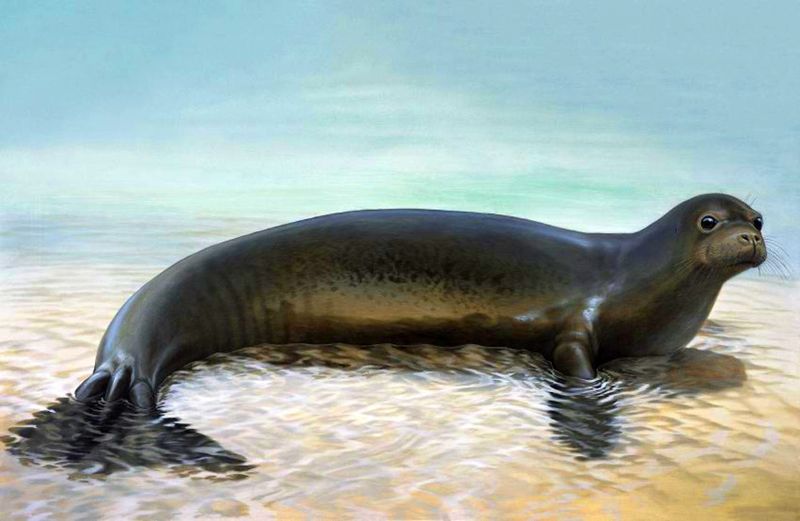
In the warm, turquoise waters of the Caribbean, the Caribbean Monk Seal once basked under the sun. These sleek marine mammals were unique inhabitants of the region, characterized by their smooth gray fur and round, expressive eyes.
They thrived in warm coastal environments, where they foraged for fish and crustaceans. Sadly, the Caribbean Monk Seal faced relentless hunting pressure from humans and competition for food resources.
By the mid-20th century, sightings of these seals had dwindled, and they were declared extinct in 2008. Their disappearance was a stark reminder of the consequences of unchecked hunting and habitat destruction.
Today, while we can no longer witness these seals enjoying the Caribbean sun, conservation efforts focus on protecting other endangered marine species, ensuring their habitats remain undisturbed.
3. Sea Mink
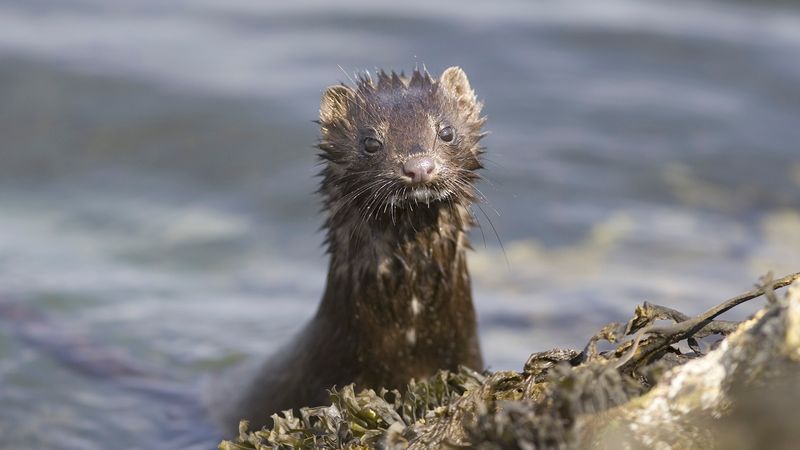
The rocky coastlines of the North Atlantic once hosted a unique creature known as the Sea Mink. This small, sleek animal was a relative of the American mink but boasted a larger size and a distinctive reddish-brown fur coat.
Sea Minks were elusive, living along rugged shores and foraging for fish, birds, and various marine invertebrates. Unfortunately, they were heavily hunted for their luxurious fur, leading to their extinction by the late 19th century.
The Sea Mink’s demise highlights the broader consequences of the fur trade on wildlife populations.
Although now extinct, the legacy of the Sea Mink persists in lessons learned about sustainable hunting practices. As we reflect on their loss, modern conservation efforts aim to prevent similar outcomes for other species threatened by exploitation and habitat loss.
2. Baiji River Dolphin
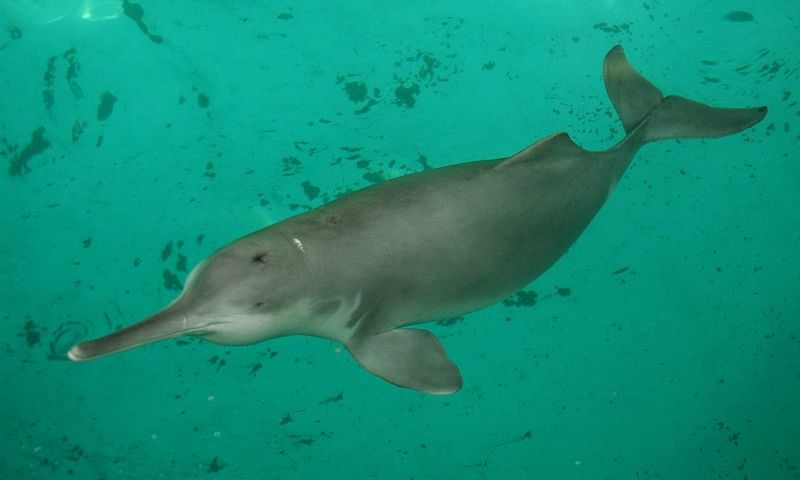
Navigating the murky waters of the Yangtze River, the Baiji River Dolphin was a graceful freshwater species, often called the “Goddess of the Yangtze.” With its long, slender beak and bluish-gray skin, it was well adapted to its riverine environment.
The Baiji thrived for millions of years, coexisting with local communities. However, rapid industrialization and increased river traffic led to habitat degradation and collisions with boats, critically endangering their population.
Declared functionally extinct in 2006, the Baiji’s disappearance highlights the devastating impact of human activity on freshwater ecosystems.
Their loss is mourned as a significant ecological tragedy, emphasizing the urgency of protecting remaining river dolphins and other aquatic species. Conservation initiatives today focus on improving river habitats and raising awareness about the fragile state of freshwater biodiversity.
1. Spectacled Cormorant
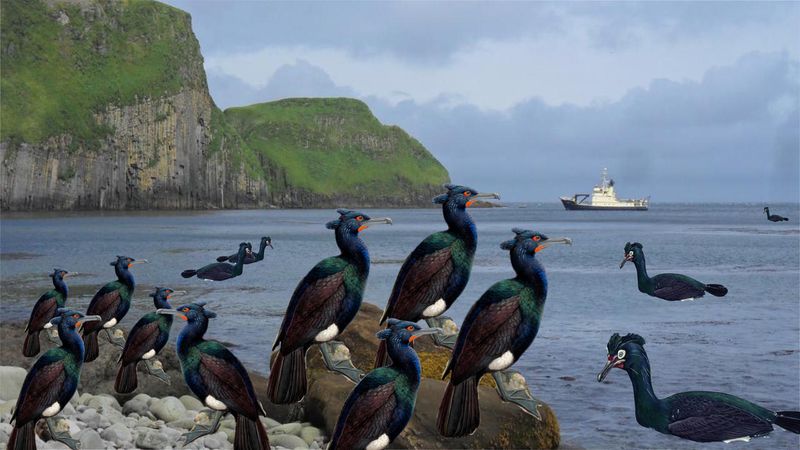
The remote Bering Island was once home to the Spectacled Cormorant, a large seabird with striking glossy black plumage and distinctive yellow facial skin. These birds were adept divers, hunting for fish in the cold northern waters.
Their presence was first documented in the 18th century by explorers, who marveled at their size and elegance. Unfortunately, human exploitation followed swiftly, as they were hunted for food by sailors and settlers.
By the mid-19th century, the Spectacled Cormorant had vanished, driven to extinction by overhunting and habitat disturbance. Their story serves as a stark reminder of the vulnerability of isolated wildlife populations.
Conservationists today draw lessons from their loss, advocating for the protection of fragile ecosystems and sustainable practices to preserve the remaining biodiversity on isolated islands and beyond.

